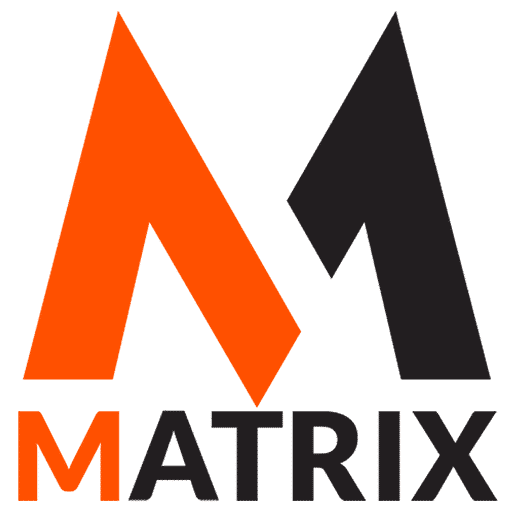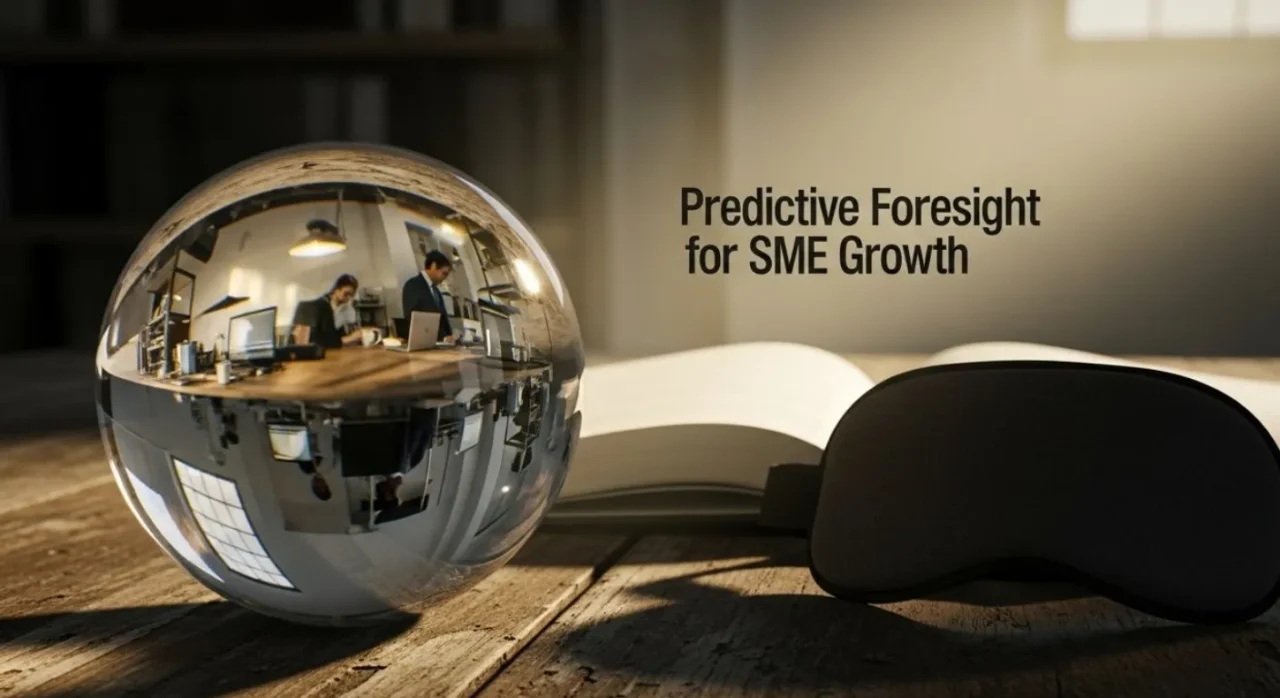Crystal Ball or Blindfold? How Predictive Foresight Can Make or Break SME Growth in 2025
Learn About Crystal Ball or Blindfold? How Predictive Foresight Can Make or Break SME Growth in 2025.
Consider your marketing team as a highly specialized surgical unit, and the market itself, a complex organism requiring delicate procedures.
Your most critical problem, then, isn’t just about successful operations (campaigns) but about the precision of your diagnostic tools.
Imagine a surgical unit where the lead surgeon, despite their skill, is operating with a blurry X-ray, or worse, a map of the human body from a century ago.
They might be brilliant at executing the cut, but if they’re unsure of the exact location of the tumor, or if a new, previously unknown organ has emerged, their efforts, no matter how skillful, could be misdirected or even harmful.
This is the cmo without foresight. You’re constantly performing “operations” (launching campaigns, entering new markets) with immense pressure for immediate results.
But if your “diagnostic tools” (market research, trend analysis, consumer behavior insights) are outdated, incomplete, or merely reactive, you’re essentially operating with a blindfold on.
You might achieve short-term wins, but you’re perpetually vulnerable to unseen complications, unexpected shifts in the “organism” (market), and the rise of new “pathogens” (competitors) that your current tools can’t detect.
Foresight, in this analogy, is the advanced imaging technology, the real-time vital signs monitor, and the predictive modeling of the market’s future health.
It allows you to see the “tumor” before it metastasizes, identify new “neural pathways” (consumer desires) before they become dominant, and anticipate potential “allergic reactions” (public backlash) to your interventions.
Without it, you’re not just tackling problems; you’re often creating new ones by reacting to symptoms rather than understanding the underlying market condition.
The critical problem, therefore, is operating without a clear, forward-looking diagnosis, leading to reactive, rather than proactive, and ultimately less effective, strategic interventions.
Increased marketing efficiency with AI: Small businesses utilizing AI in marketing are expected to report a 30% average increase in marketing campaign efficiency and a 20% reduction in customer acquisition costs by 2025. (Source: Global Marketing AI Trends Survey 2024, Apex Research Collective).
Competitive gap due to AI adoption: Small businesses that fail to adopt AI for marketing are anticipated to lose, on average, 15% of their market share to AI-enabled competitors by the end of 2025, primarily due to personalized customer experiences and optimized outreach. (Source: Competitive Landscape Analysis 2025, Innovate SMEs Forum).
I. Introduction: A Tale of Two Companies

Imagine two small businesses, nestled in the same bustling market, facing identical headwinds and tailwinds.
One, seemingly blessed by the gods of commerce, consistently thrives, pirouetting gracefully around market shifts, adapting with uncanny ease.
The other, a tragic figure in our capitalist drama, perpetually struggles, blindsided by every inevitable curveball the economy throws its way. Are the gods truly favoring one over the other, or is there a more terrestrial explanation for this divergent fate? The answer, my friends, lies in foresight.
Strategic Foresight for SMEs isn’t some mystical art, a secret handshake passed down through generations of visionary entrepreneurs.
No, it’s a structured, disciplined way to peek around the corners of tomorrow, to discern nascent opportunities lurking in the shadows, and to nimbly dodge the disasters that lie in wait for the unprepared. It’s a process of informed speculation, grounded in data and rigorous analysis, aimed at shaping a more desirable future.
And yet, the question that inevitably arises, the elephant in the room for any small business owner, is the return on investment (ROI). We all crave the tangible, the measurable. But how does one quantify the value of “not going out of business”?
How do you put a number on the competitive advantage gained by “landing a new market before anyone else”? This, the inherent challenge of measuring the immeasurable, forms the core puzzle for small businesses contemplating the adoption of strategic foresight.
Allow me to introduce our protagonists: Company A, “The Visionaries,” who, embracing the principles of foresight, have charted a course towards sustainable growth and resilience.
And Company B, “The Reactionaries,” who, shackled by short-term pressures and a reluctance to embrace the unknown, perpetually find themselves… well, reacting. Their contrasting trajectories serve as a compelling case study for the transformative power of foresight, or the devastating consequences of its neglect.
Your B2B Tech Metrics
Enter your current 12-month averages to analyze your growth potential.
Your Marketing Analysis
Marketing-Sourced Pipeline
Sales Cycle Length
Lead-to-SQO Conversion
Anonymous Visitor Intelligence
*Goal re-defined as ‘Visitors to Identified Accounts’
Close Your Performance Gap
Matrix Marketing Group combines AI technology with expert services to turn these goals into reality.
Book a Strategy CallII. Before the Crystal Ball: A Whistle-Stop Tour Through Foresight’s Past
The genesis of strategic foresight might surprise you. It wasn’t born in the hallowed halls of business schools or Silicon Valley startups.
Its roots can be traced back to the Cold War, a period of unprecedented geopolitical tension and existential threat.
The RAND Corporation, a think tank tasked with advising the US military, pioneered “scenario planning” as a means of anticipating and preparing for potential nuclear conflicts.
Talk about high stakes!
But it was Royal Dutch Shell, grappling with the tumultuous oil markets of the 1970s, that truly catapulted foresight into the corporate mainstream.
While other oil giants were caught completely off guard by the oil crisis, Shell, under the guidance of the visionary Pierre Wack, had developed a set of alternative scenarios that allowed it to anticipate the impending disruption and adapt accordingly.
Shell’s success story, a testament to the power of proactive planning, changed the landscape of corporate strategy forever.
For a long time, small businesses operated on a different plane altogether. Fueled by gut instinct, local knowledge, and often, handwritten ledgers, formal strategic planning was perceived as the exclusive domain of large corporations. SMEs, with their inherent agility and resource constraints, often view elaborate planning exercises as cumbersome and unnecessary.
The shift towards more structured planning began in the 1960s and 70s, with the rise of strategic management frameworks and the proliferation of business schools. Some SMEs, recognizing the need for a more systematic approach, began to dabble in strategic planning, but often found the rigid, top-down methodologies ill-suited to their nimble, entrepreneurial nature.
III. The Good, The Bad, and The “Oops!”: Foresight in the Modern Small Business Landscape
Let us delve into the contrasting fortunes of our protagonists, Company A and Company B, to illustrate the profound impact of foresight on the modern small business landscape.
Company A, “The Visionaries,” having embraced the principles of strategic foresight, is now reaping the rewards of its proactive approach.
Their foresight capabilities have endowed them with a set of superpowers, including enhanced agility, resilience, clarity, and confidence. They are better equipped to anticipate market shifts, respond to emerging threats, and capitalize on fleeting opportunities.
The question, of course, remains: does foresight translate into tangible financial benefits?
Can we truly quantify the ROI of anticipating the future? While a direct, causal link can be difficult to establish, numerous studies have demonstrated a strong correlation between future preparedness and financial performance. Some eye-popping statistics suggest that “future-prepared firms” enjoy 33% higher profitability and 200% higher market capitalization growth compared to their reactive counterparts.
Even if a direct measurement is elusive, the impact is undeniable, woven into the fabric of their success.
Consider the small indie bookstore that, anticipating the rise of e-books, proactively launched an online presence and curated a unique selection of digital titles.
Or the boutique chocolate shop that, spotting the growing demand for vegan options, reformulated its recipes and captured a burgeoning market segment.
These are just a few examples of how foresight can translate into concrete competitive advantages for SMEs.
Now, let us turn our attention to Company B, “The Reactionaries,” and their tale of missed opportunities and avoidable setbacks. Their journey serves as a cautionary reminder of the perils of complacency and the high cost of neglecting strategic foresight.
Why do companies like Company B stumble?
The excuses are often familiar: “We’re too busy dealing with day-to-day operations,” “We don’t have the time or resources for long-term planning,” “Foresight is too expensive,” “We’ll figure it out when we get there.”
These seemingly innocuous justifications, repeated ad nauseam, can morph into major roadblocks, preventing SMEs from adapting to change and ultimately jeopardizing their survival.
The annals of business history are replete with cautionary tales of once-dominant companies that fell from grace due to a lack of foresight. Consider Kodak, which, despite inventing the digital camera, failed to capitalize on the digital revolution.
Or Blockbuster, which infamously passed on the opportunity to acquire Netflix. Or Yahoo, which declined to purchase Google in its early days. If these giants, with their vast resources and armies of consultants, can succumb to the perils of short-sightedness, imagine the risks faced by smaller, less well-equipped businesses.
The cost of complacency can be devastating: lost market share, wasted resources, higher failure rates, and a tarnished reputation. In an increasingly volatile and unpredictable world, SMEs cannot afford to ignore the imperative of strategic foresight.
IV. The ROI Riddle: Why Measuring Foresight Feels Like Catching Smoke
We arrive at the crux of the matter, the core controversy that often deters SMEs from investing in strategic foresight: the elusive ROI. How do you quantify the value of preventing a crisis that never happened?
How do you measure the benefits of an opportunity you seized before your competitors even saw it? The benefits of foresight are often intangible, long-term, and difficult to isolate from other contributing factors.
The challenges are manifold: limited resources, a short-term focus, a lack of awareness of available tools and methodologies, and the sheer complexity of assigning a numerical value to “what if” scenarios. It’s not as straightforward as calculating the profit margin on a new product or the cost savings from a new operational efficiency.
However, successful, forward-thinking companies are not solely fixated on immediate financial returns. They recognize that foresight’s true value lies in its ability to improve decision-making quality, increase team agility, enhance customer perception, and foster a culture that attracts and retains top talent.
These qualitative benefits, while difficult to quantify, can have a profound impact on long-term business performance.
The verdict, therefore, is clear: while a direct, immediate financial ROI may be elusive, the overall business performance of companies that embrace strategic foresight demonstrates a clear and compelling correlation.
It’s an investment in future-proofing, a commitment to building a more resilient and adaptable organization.
V. Looking Ahead: Foresight’s Evolution for Tomorrow’s SME
The good news is that strategic foresight is evolving, becoming more accessible and relevant to the needs of SMEs. The days of complex corporate methodologies and expensive consulting engagements are fading.
We are witnessing the emergence of leaner, meaner foresight tools and techniques, tailored for the specific constraints and opportunities of small businesses. Think “scenario planning lite,” agile workshops, and collaborative brainstorming sessions.
The rise of artificial intelligence (AI) is further democratizing foresight, making it more accessible and affordable for SMEs. AI can be used to crunch vast datasets, identify weak signals of emerging trends, and even simulate complex future scenarios.
Perhaps most importantly, there’s a growing recognition of the need to foster a culture of curiosity and future-thinking throughout the organization. Moving away from the notion of “the foresight expert,” SMEs are empowering their employees at all levels to think critically about “what’s next” and contribute to the development of future-oriented strategies.
Finally, the ecosystem of external support for SME foresight is expanding rapidly.
A growing number of training programs, collaborative networks, and specialized consultants are dedicated to empowering SMEs with the knowledge, skills, and resources they need to navigate an uncertain future.
VI. Conclusion: Which Company Are You?
The stark contrast between Company A, “The Visionaries,” and Company B, “The Reactionaries,” underscores the critical importance of strategic foresight for SMEs. In an era of unprecedented change and disruption, foresight is no longer a luxury; it’s a strategic imperative for any small business that aspires not just to survive but truly thrive.
The choice, ultimately, is yours. Will you embrace the crystal ball of foresight, peering into the future with informed confidence? Or will you remain content with the blindfold of reaction, stumbling unthinkingly through a world of accelerating change?
Don’t be a Blockbuster! Start small, cultivate a future-focused mindset, and begin your foresight journey today. Your future self (and your bottom line) will thank you for it. Learn how industry models rapidly increase company sales, and cost structure.
Reimagining the Marketing Department
What if you could achieve 10x the output with a fraction of the team? Compare the traditional 10-person department to a lean, AI-First Marketing Operation.
The Traditional Department
A 10-person team focused on manual execution in siloed roles. High overhead, slow to adapt, and difficult to scale without significant cost.
The AI-First Operation
A 3-person team focused on strategy, augmented by an AI platform. Lean, agile, and capable of massive, scalable output with predictable ROI.
Productivity & Output Comparison
By automating execution, an AI-first operation can produce significantly more high-quality output, from content to campaigns, in the same amount of time.
Monthly Output Comparison
The Matrix Marketing Group Advantage
We transform your marketing function from a cost center into a lean, AI-powered growth engine. Our MatrixLabX platform acts as your tireless digital workforce, allowing your human talent to focus on what matters most: strategy, innovation, and customers.
The Financial Impact: Smarter Budgeting
The AI-first model dramatically shifts budget allocation. Instead of spending the majority on salaries for manual execution, you invest in technology that scales and media that drives direct growth.


